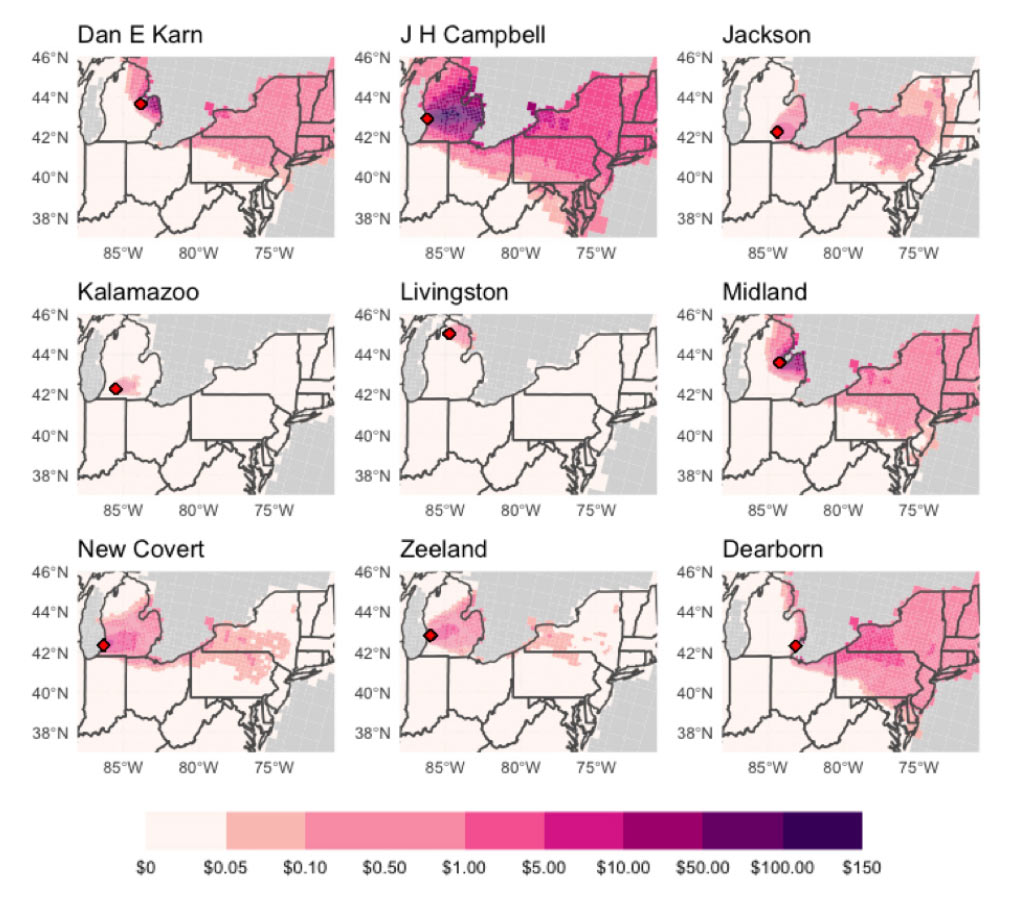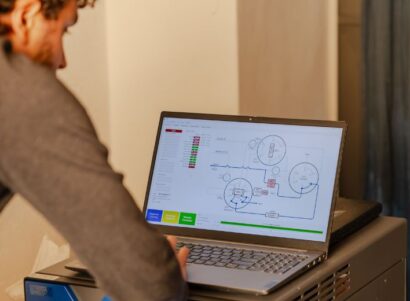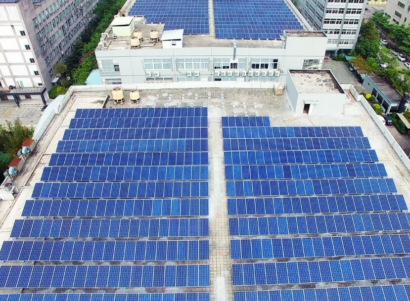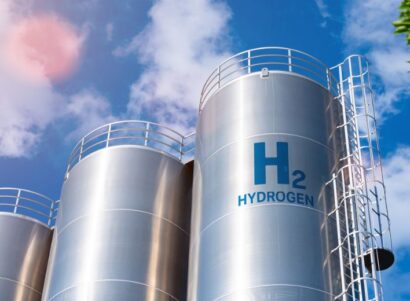Across the United States, many utilities and energy regulators are grappling with an essential question: how should the health, environmental, and equity impacts of energy infrastructure be taken into account during utility planning? The answer to this question is now being actively tested in Michigan. This spring, the utility Consumers Energy agreed to incorporate scientific health and equity metrics into their next integrated resource plan (IRP) and Michigan Public Service Commission is now exploring whether to require other utilities to follow suit. These developments come after years of community engagement and an executive order from Governor Whitmer requiring IRPs to consider environmental justice and health.
More than half of all U.S. states require utility companies to prepare for future energy needs through Integrated Resource Plans (IRPs). As part of this process, utilities may propose spending billions of dollars on energy infrastructure in order to meet projected electricity demand and reliability needs. Taken together, utility investments in energy infrastructure are substantial. In 2019 alone, utilities spent nearly $100 billion to improve electricity transmission and distribution systems—investments that ratepayers will be required to pay off over time. What’s more, these investments often have a decades-long shelf life. As a result, IRPs shape how states produce, transmit, and distribute energy for decades to come and have long-lasting implications for public health, the environment, and energy affordability.
Fossil fuels supply roughly 61 percent of utility-scale electricity generation in the U.S. In addition to driving climate change, burning fossil fuels produces health-damaging air pollution, which can cause a range of negative respiratory, cardiovascular, and neurological health impacts. About 16,400 premature deaths in the United States every year are associated with fine particulate matter from electricity generation, or about four deaths per terawatt-hour of electricity generated. Furthermore, many power plants are located in low-income communities and communities of color, where the combined emissions from multiple sources of pollution, such as industry and traffic, often create high cumulative environmental health burdens. Non-fossil resources can mitigate these health impacts, and some of these resources—including energy efficiency and distributed solar and energy storage—can provide households with additional benefits such as improved energy affordability and reliability.
Yet despite the long-term implications of energy infrastructure on public health, most states do not require utilities to consider how their IRPs will impact public health and equity. At PSE, we’re working to help change that. Our researchers have engaged in the IRP process in Michigan and Minnesota through a series of reports and expert testimonies on behalf of non-profits such as Union of Concerned Scientists and Environmental Law & Policy Center. Our goal is to provide the scientific metrics needed to support health and equity-informed decision-making within utility IRPs.
Below we describe some of the key metrics we have used to determine how utility IRPs will affect energy and environmental equity, particularly in terms of public health and affordability. We consider energy equity to “encompass the participation and inclusion of historically marginalized populations in the energy economy—including energy ownership, production, and use—in order to shape energy policy that is more equitable, accessible, and economically beneficial.” At the same time, environmental equity “ensures that no population faces a disproportionate share of environmental pollution and that all populations have access to the benefits of a clean environment and an opportunity to participate in the environmental policy decision-making process.” It is important to note, however, that every community is different. Depending on local conditions, different metrics may be needed. Engaging community members throughout the design and implementation process can help ensure that metrics meet local needs and are useful for regulators and other stakeholders.
1. Identify Demographics and Environmental Risk Factors of Communities Near Power Plants
Power plants can impact public health and the environment in a range of ways, including through air pollution, on-site waste disposal, and the use of industrial equipment. In most cases, per-capita health impacts tend to be the greatest for people living in close proximity (1-3 miles) to a power plant, although cumulative impacts extend for hundreds of miles. Low-income populations and communities of color tend to be disproportionately impacted by environmental risk factors and health outcomes. Existing tools, such as the U.S. Environmental Protection Agency’s EJScreen, can be used to evaluate the demographics of people living close to power plants within an IRP. This information can be used to identify whether certain plants are located in communities that are more vulnerable to air pollution or tend to have higher cumulative levels of environmental health burdens.
For example, in Dr. Elena Krieger’s direct testimony on Michigan-based Consumers Energy’s IRP, she demonstrates that the 118,000 people living within three miles of a gas plant near Detroit faced higher cumulative environmental and health burdens than 99.9 percent of Michigan communities (Figure 1). Based on this understanding, the utility’s plan to purchase and continue the use of such a plant would compound exposure to pollution within a community that is likely already facing high cumulative environmental burdens, posing environmental justice and equity concerns.
This kind of analysis allows us to understand how different power plants in a utility’s portfolio stack up in terms of health and environmental risk. Based on this, we can prioritize retiring power plants that are likely to cause the most harm.
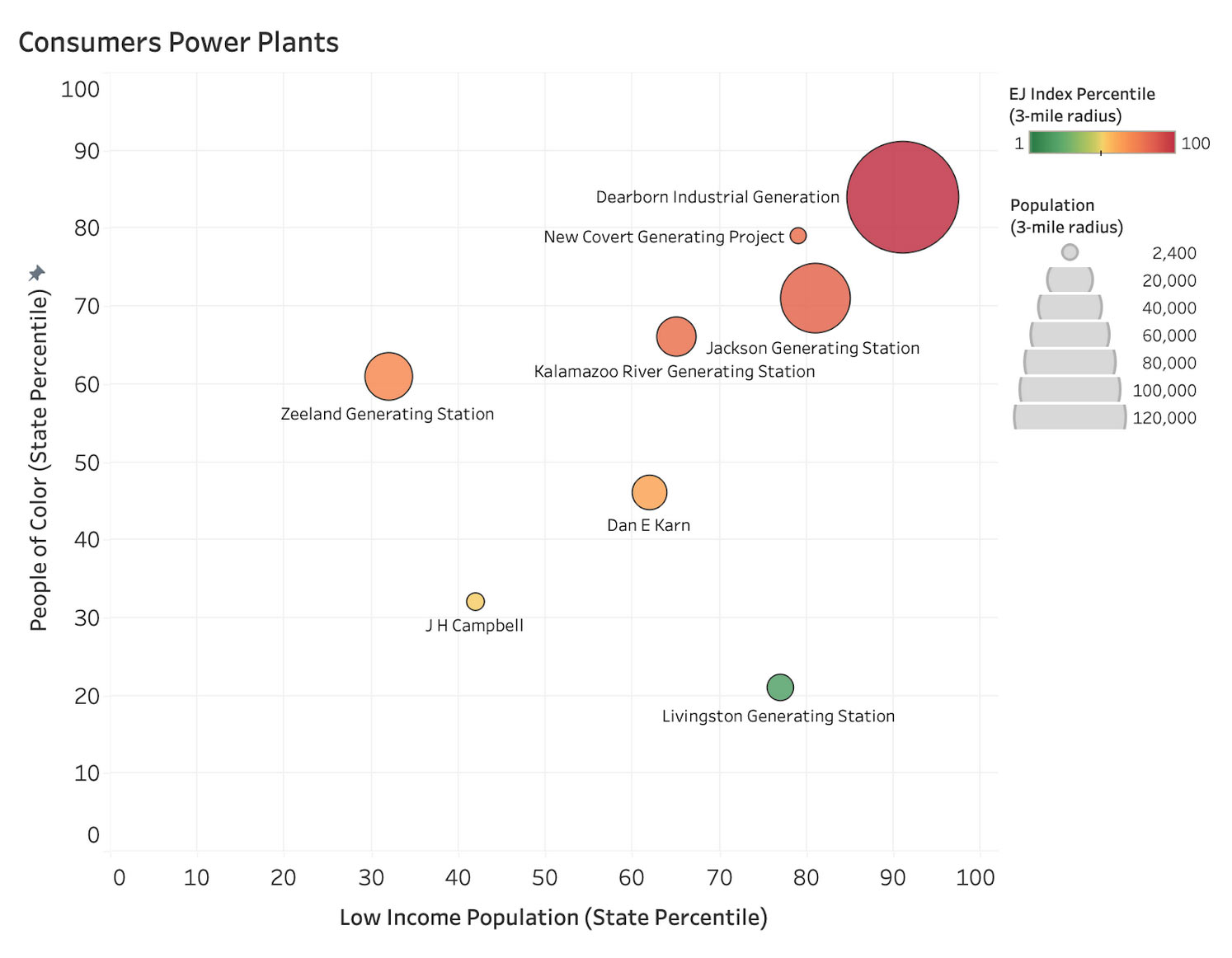
Figure 1: Demographics of populations living within three miles of plants Consumers Energy proposed to use in its IRP.
2. Determine the Exposures and Health Impacts of Power Plant Emissions
All fossil-fueled power plants emit harmful air pollutants. The impacts of these pollutants are determined not only by the proximity and characteristics of local populations but by the amount and types of pollutants emitted. How harmful the air pollution from a specific power plant is depends on 1) the fuel source (coal, biomass, natural gas), 2) the amount of energy produced by the plant, 3) the types of emissions controls being used, and 4) who is exposed to the emissions released by the plant. Several models can be used to evaluate the health impacts of the power plants in a utility’s portfolio (e.g., COBRA, InMAP, BenMAP). Modeled health impacts can then be used to prioritize which power plants should be replaced by a cleaner alternative.
Health costs can be presented as the total impacts or the per-capita impacts of an individual power plant. Total impacts tend to concentrate in densely populated areas, while per-capita impacts tend to be the highest near and downwind from power plants (Figure 2). The latter metric can be used to assess health impacts by demographic indicators. For example, in our recent report on Minnesota Power’s IRP, we found that the per-capita health impacts were the highest for Native populations because they tend to live nearest to the utility plants. In Michigan, Dr. Kelsey Bilsback’s direct testimony on Consumers Energy’s IRP demonstrated the disproportionate impacts power plants can have on certain demographic groups. For example, she identified that the gas plant the utility planned to procure near Detroit (Figure 2) had two and a half times higher per-capita health impacts for Black people than the overall population.
Figure 2: Per-capita public health impacts of each of the nine power plants in the Consumers IRP. Values are given in dollars per 100 people. The location of each plant is shown as a red dot.
Both total or per-capita health impact metrics can be used to prioritize the retirement or transition of power plants to a zero-emissions energy source. For example, with both Consumers Energy’s and Minnesota Power’s IRPs, the coal plants tended to have the highest health impacts, thus, future IRPs that prioritize early coal plant retirement are likely to have substantial health benefits.
3. Evaluate Other Health and Environmental Hazards
Power plants may pose other health and environmental risks beyond air pollution emissions. For example, ash waste from a coal plant is often disposed of on-site in a pond or impoundments (Figure 3), which can lead to groundwater contamination. Further, thermal generating stations may have heavy water usage, leading to degraded water resources.
Informed by local communities, a range of environmental data can be assessed and evaluated during the IRP process. For example, in our recent report on Minnesota Power’s IRP, we used the EPA’s Toxics Release Inventory and Air Markets Program Data to estimate the waste generation and water usage, respectively, of coal plants. Further, we found that several coal plants had been in violation of the Clean Water Act with exceedances of harmful compounds such as arsenic and radium, demonstrating early coal plant retirements are likely to have environmental health benefits through reducing water and soil pollution in addition to improvements in air quality. Communities also expressed concern regarding the harmful impacts of mercury on the surrounding environment.

Figure 3: Boswell Energy Center’s coal ash ponds. Image from GoogleMaps, 2022.
4. Assess the Impact on Energy Costs and Energy Access
Utility IRPs are an important factor in determining the cost of electricity in the territories that utilities serve, both because investments are passed on to customers and because certain resources, such as energy efficiency, can help reduce energy cost burdens. Energy cost burden is defined as the percent of household income spent on energy bills. Values greater than 6 percent are considered to be high. Evaluating how energy cost burdens are distributed among demographic groups (such as renters and low-income populations) by census tract, can provide a roadmap for utilities to prioritize energy-saving measures (Figure 4).
For example, in our recent report on Minnesota Power’s IRP, low-income communities, renters, and Black communities were found to have disproportionately high energy cost burdens. Given this, targeting efficiency, weatherization, and residential solar programs for these communities was suggested to help combat this disparity. We estimated that 30 percent of Minnesota Power’s customers are low-income, however, these households have received only 20 percent of historic residential efficiency investments and are projected to accrue just 13 percent of energy efficiency savings in the coming years. Targeting energy efficiency programs to these communities would save energy and provide affordability benefits for the households that most need it. The adoption of additional resources, such as rooftop and community solar and distributed energy storage, could provide additional resilience and affordability benefits while offsetting the need for utility-scale investments. Our recent analysis on energy affordability for the Colorado Energy Office found that these kinds of investments in cost-burdened communities can save taxpayer and ratepayer dollars over the long-term while supporting emissions reductions and public health.
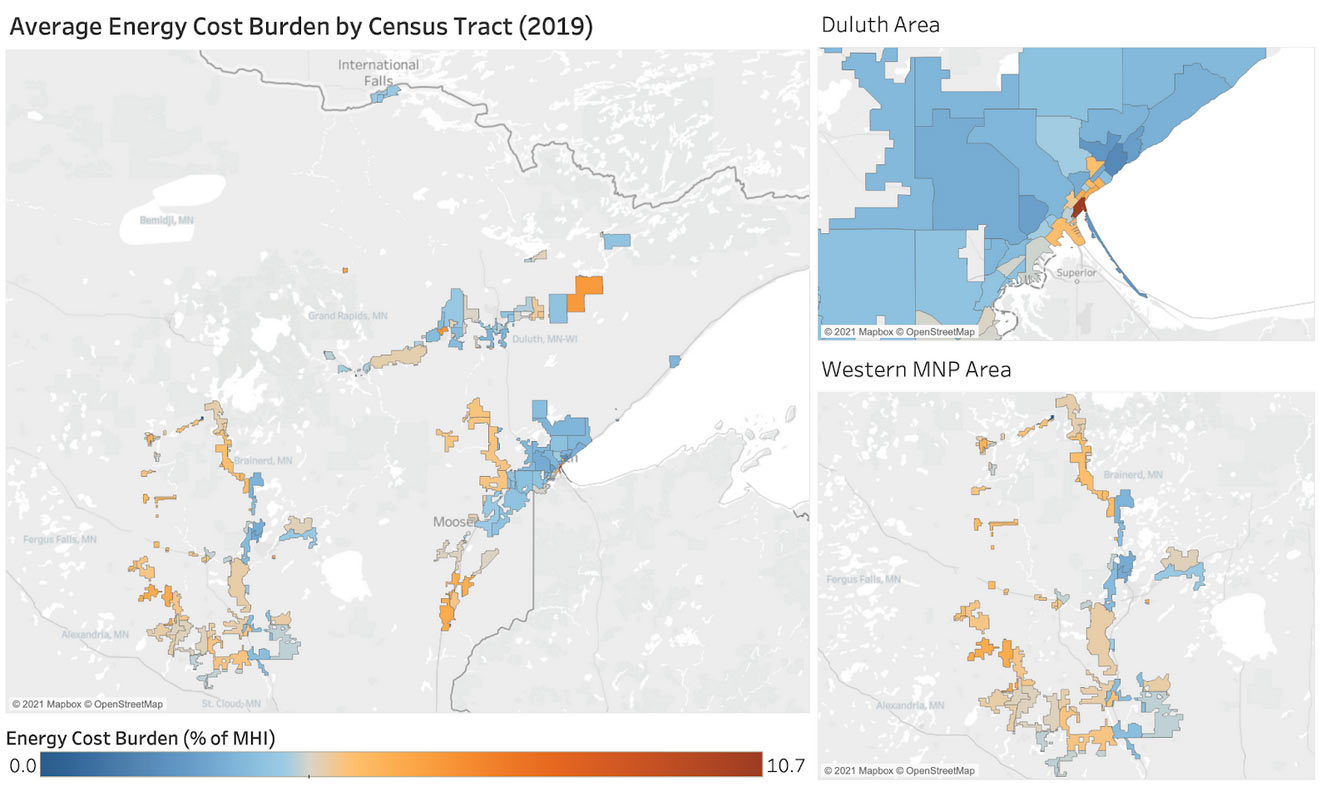
Figure 4: Average household energy cost burden by census tract in Minnesota Power’s Territory.
Looking Ahead: Prioritizing Utility Investments that Support Health and Equity
The choices made through the utility IRP process will inevitably impact public health, our environment, and energy affordability for years to come. The four aspects outlined here, adapted through ongoing discussions with local community members, can provide the critical data needed to analyze, compare, and prioritize utility investments that bring us closer to an energy future that is healthy, resilient, and equitable.

